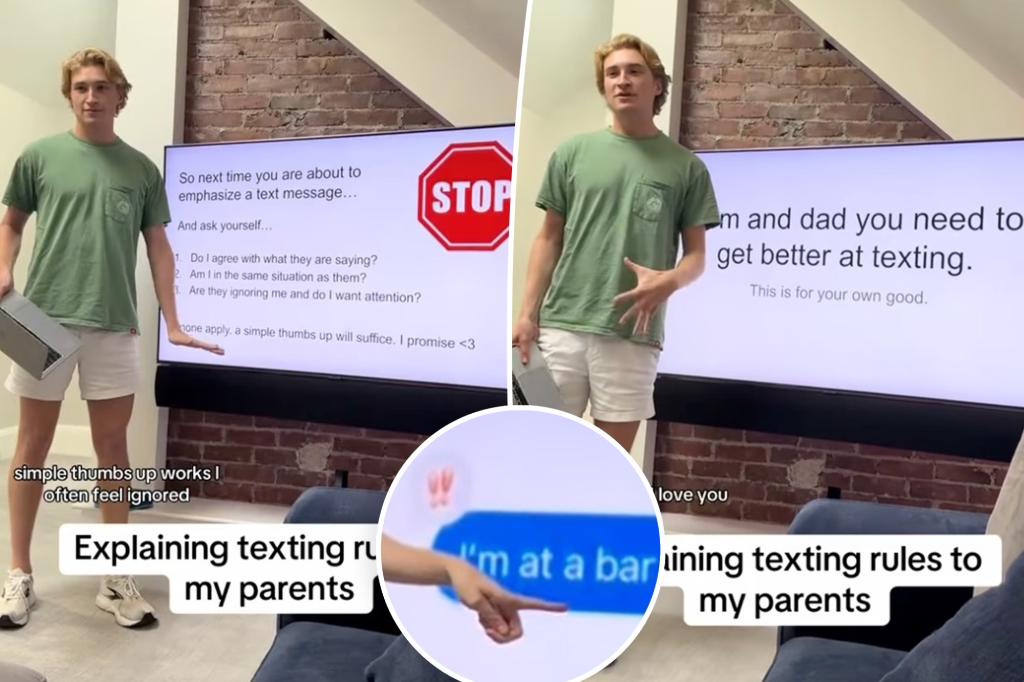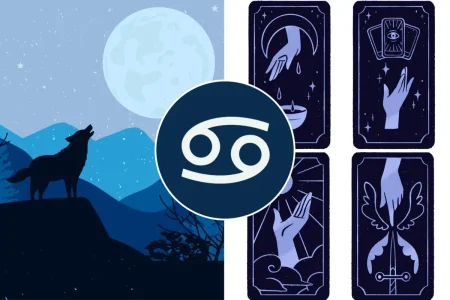Bridging the Texting Generation Gap: How Different Age Groups Communicate Digitally
In today’s digital landscape, the way we text has become a fascinating window into generational differences. While Baby Boomers might favor a simple thumbs-up emoji to acknowledge a message, Generation Z has developed an intricate language of slang, acronyms, and subtle reactions that can feel like a foreign dialect to older generations. This communication gap isn’t just leading to misunderstandings—it’s sparking conversations about digital etiquette across age groups. Recently, 22-year-old Jason Saperstone decided to address this disconnect head-on by creating a “Texting Rules” PowerPoint presentation specifically for his parents. His Instagram post about this instructional session quickly resonated with many who recognized the familiar struggle of cross-generational digital communication. “Mom and Dad, I love you, but you need to get better at texting,” Saperstone began in his presentation, highlighting how even the most well-intentioned messages can be misinterpreted when generational texting norms clash. His initiative reveals something important: as our communication increasingly moves to digital platforms, understanding these unwritten rules has become an essential social skill.
The focal point of Saperstone’s lesson centered on what might seem like a minor feature—the “exclamation point” reaction available in many messaging apps. According to the young digital native, this function serves specific purposes that his parents were missing: it should be used to indicate agreement with what someone has said, to acknowledge you’re in the same situation as the sender, or to politely request attention when being ignored. “Next time you are about to emphasize a text message, ask yourself: do I agree with what they are saying? Am I in the same situation as them? Are they ignoring me and do I want attention? If none apply, a simple thumbs up will work,” he explained to his parents, who appeared genuinely confused by these unwritten protocols. The reaction from commenters on his post revealed that this confusion extends far beyond his household, with many admitting they use the emphasis reaction very differently—often as an expression of surprise or excitement. “I thought emphasize was the equivalent of saying ‘omg,'” wrote one commenter, while another defended their interpretation: “I use it like ‘omg, whaaat?’ Like in response to someone telling me something wild or exciting.” This range of interpretations shows how digital communication features can take on entirely different meanings depending on when you first encountered them.
The complexity of modern texting etiquette isn’t lost on Saperstone himself, who acknowledged in an interview with TODAY.com that his generation has significantly complicated what should be a straightforward form of communication. “They text with such good intentions,” he said about his parents, “but I don’t think they really get all the features. Gen Z has made it tricky for them. We’ve basically created our own language that only we fully understand.” This candid admission highlights a fascinating aspect of digital communication evolution—younger generations aren’t simply adopting technology; they’re actively reshaping how it’s used, creating nuanced social codes that can feel exclusionary to those not immersed in their digital culture. The challenge isn’t merely about learning to use new features but understanding the subtle social implications that come with different usage patterns. Parents and older adults often find themselves playing catch-up, trying to decipher not just what certain emoji or reactions mean technically, but what they convey socially within different contexts and relationships.
Interestingly, the texting critique doesn’t flow in just one direction—from younger to older generations. Gen Z has also taken aim at Millennials for their distinctive texting habits, particularly their liberal use of “lol” (laugh out loud) in messages. This criticism prompted Millennial Anna Gaddis to defend her generation’s practice on TikTok, explaining that ending sentences with “lol” isn’t actually indicating loud laughter but serves as a social lubricant—a way to soften message tone and avoid appearing too serious or harsh. “That’s just what it is,” she emphasized, suggesting that the abbreviation has evolved from its original meaning to become a crucial tone indicator in text-based communication. The comment section of her video revealed strong agreement among fellow Millennials: “If I don’t use ‘lol’ I sound rude,” one person noted, while others described it as a way “to soften delivery” or simply added that “It’s just polite lol”—appropriately demonstrating the very habit under discussion. This exchange highlights how each generation develops its own digital shorthand that serves specific social functions beyond literal meaning.
What makes this generational texting divide particularly fascinating is how it mirrors broader cultural shifts in communication. Digital natives who grew up with text messaging don’t see these platforms as merely utilitarian tools for exchanging information—they’re complex social spaces with their own evolving norms and expectations. For them, how you text can be as meaningful as what you text. The specific reaction you choose, whether you use periods at the end of sentences, how quickly you respond, and even your emoji selection all communicate subtle social cues that go far beyond the literal content of your message. Older generations, who adopted these technologies later in life, often approach texting more practically, focusing primarily on clarity and information exchange rather than these nuanced social signals. When someone comments “Gen Alpha does not get to redefine punctuation,” they’re expressing frustration with what feels like constantly shifting rules, while younger users might counter that all language evolves based on how communities actually use it, not how it was originally intended.
The emergence of these texting tutorials and cross-generational debates signals something important about our digital future. As communication increasingly moves to text-based platforms, understanding these subtle digital social codes becomes increasingly essential for meaningful connection across age groups. Rather than dismissing generational differences in texting style as merely annoying quirks or rebellious redefinitions, we might better view them as evolving dialects of digital communication—each with its own legitimate uses and social functions. The thumbs-up that feels dismissive to a Gen Z recipient might be genuinely warm acknowledgment from a Boomer sender. The constant “lols” that seem unnecessary to younger users serve as crucial tone markers for Millennials raised in early internet culture. These differences don’t necessarily indicate that any generation is “doing it wrong”—rather, they reflect how our relationship with technology is shaped by when and how we first encountered it. As Saperstone’s “Texting Rules” presentation demonstrates, bridging these digital divides requires not just technical knowledge but patience, humor, and a willingness to learn each other’s digital languages—perhaps the most important communication skill for our increasingly text-based world.















